As a first time user, I've managed to make it work, but it was not straightforward to me.
I guess there are no many people familiarized with this IDE, so I'm going to post the steps I followed, as a basic tutorial:
Download and install jGRASP version 2.0.5_05 Beta.
Since I have a few JDKs installed, it selected by default JDK 10.0.2, so my first step was to find a way to work with JDK 11. That can be done in Settings -> jGrasp Startup Settings, where I can set the path for my java executable:

Then I restarted jGrasp. You can verify which JDK the IDE is using in Tools -> System Info -> Java Version.
Open HelloFX sample class. I've started with the most basic sample from the OpenJFX docs. The code can be found here.
Build -> compile, as expected, will throw a bunch of errors given that JavaFX is no longer part of the JDK:

Following the OpenJFX docs, we need to download the JavaFX SDK from here, and then add the library to the classpath. Go to Settings -> PATH/CLASSPATH -> Workspace, press New, and add, one by one, the different JavaFX jars from the downloaded SDK/lib folder (at least javafx-base.jar, javafx-graphics.jar and javafx-controls.jar).
Build -> compile should work now.
Next step: Build -> Run. This fails:
----jGRASP exec: java HelloFX
Error: JavaFX runtime components are missing, and are required to run this application
----jGRASP wedge: exit code for process is 1.
----jGRASP: operation complete.
That was expected. According to the docs, we need to set the module-path and add-modules arguments.
- First attempt: use
Run arguments. After setting:
--module-path /Users/<user>/Downloads/javafx-sdk-11.0.2/lib --add-modules javafx.controls
running again failed with the exact same error message as above, but with one difference in the console log:
----jGRASP exec: java HelloFX --module-path /Users/<user>/Downloads/javafx-sdk-11.0.2/lib --add-modules javafx.controls
What's wrong with that!? Well... if you try that on command line, it will fail as well, because the order of arguments is wrong, the vm arguments should go before the class name.
In conclusion: Run arguments are not VM arguments!
- Second attempt: In order to provide the VM arguments, the option I found was to edit
Settings -> Compiler settings -> Workspace. By default, it is using jdk (integrated debugger) - generic. You can view it and see that for Run it uses:
java %S -ea %S %<FLAGS2> %<MAIN_CLASS> %<ARGS>
So instead of ARGS we need to find a way to set FLAGS2.
Luckily, next to the Environment tab, there is a Flags/Args tab, and there we can set our vm arguments in FLAGS2:
--module-path /Users/<user>/Downloads/javafx-sdk-11.0.2/lib --add-modules javafx.controls

- Apply, close the dialog, and
Build -> Run the class, now it will work!
If you see the console log, it contains exactly the command you would use when running on command line:
----jGRASP exec: java --module-path /Users/<user>/Downloads/javafx-sdk-11.0.2/lib --add-modules javafx.controls HelloFX
----jGRASP: operation complete.
I guess the next step will be running a more complex project...


